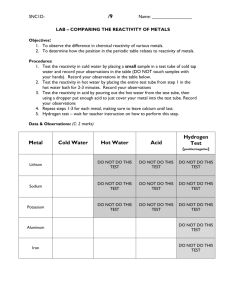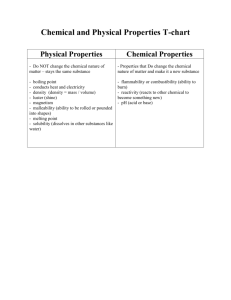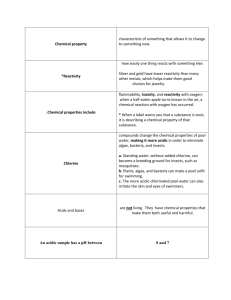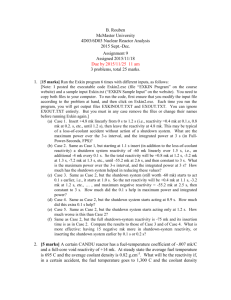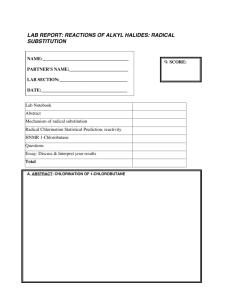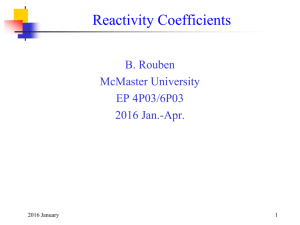91166 Demonstrate understanding of chemical reactivity
advertisement
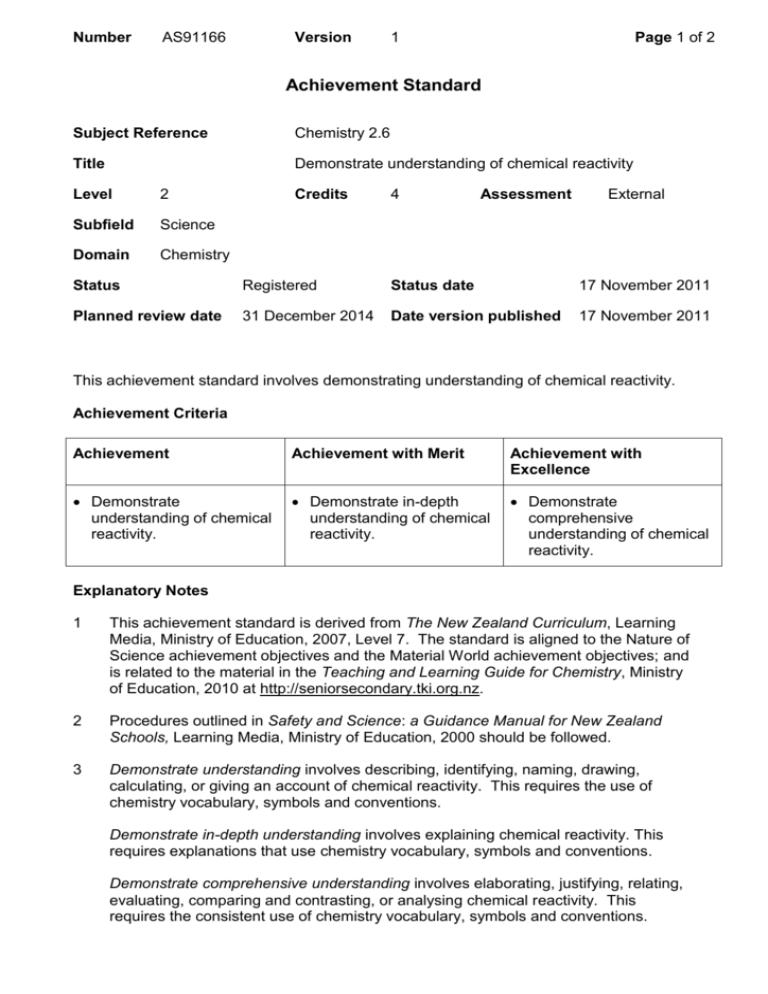
Number AS91166 Version 1 Page 1 of 2 Achievement Standard Subject Reference Chemistry 2.6 Title Demonstrate understanding of chemical reactivity Level 2 Subfield Science Domain Chemistry Credits 4 Assessment External Status Registered Status date 17 November 2011 Planned review date 31 December 2014 Date version published 17 November 2011 This achievement standard involves demonstrating understanding of chemical reactivity. Achievement Criteria Achievement Achievement with Merit Achievement with Excellence Demonstrate understanding of chemical reactivity. Demonstrate in-depth understanding of chemical reactivity. Demonstrate comprehensive understanding of chemical reactivity. Explanatory Notes 1 This achievement standard is derived from The New Zealand Curriculum, Learning Media, Ministry of Education, 2007, Level 7. The standard is aligned to the Nature of Science achievement objectives and the Material World achievement objectives; and is related to the material in the Teaching and Learning Guide for Chemistry, Ministry of Education, 2010 at http://seniorsecondary.tki.org.nz. 2 Procedures outlined in Safety and Science: a Guidance Manual for New Zealand Schools, Learning Media, Ministry of Education, 2000 should be followed. 3 Demonstrate understanding involves describing, identifying, naming, drawing, calculating, or giving an account of chemical reactivity. This requires the use of chemistry vocabulary, symbols and conventions. Demonstrate in-depth understanding involves explaining chemical reactivity. This requires explanations that use chemistry vocabulary, symbols and conventions. Demonstrate comprehensive understanding involves elaborating, justifying, relating, evaluating, comparing and contrasting, or analysing chemical reactivity. This requires the consistent use of chemistry vocabulary, symbols and conventions. Number AS91166 Version 1 Page 2 of 2 Chemical reactivity is limited to rates of reaction and equilibrium principles. 4 Rates of reaction involve: factors affecting rates of reaction – restricted to changes in concentration, temperature, surface area, and the presence of a catalyst using collision theory to explain the factors (includes activation energy). 5 Equilibrium principles are limited to: the dynamic nature of equilibrium the effect of changes in temperature, concentration, pressure, or addition of a catalyst on equilibrium systems the significance of the equilibrium constant (Kc) for homogeneous systems. This may involve calculations the nature of acids and bases in terms of proton transfer properties of aqueous solutions of strong and weak acids and bases including ionic species. The properties are restricted to conductivity, rate of reaction, and pH calculations involving Kw and pH (restricted to strong acids and bases). 6 Assessment Specifications for this achievement standard can be accessed through the Chemistry Resources page found at http://www.nzqa.govt.nz/qualificationsstandards/qualifications/ncea/ncea-subject-resources/. Replacement Information This achievement standard replaced AS90310. Quality Assurance 1 Providers and Industry Training Organisations must have been granted consent to assess by NZQA before they can register credits from assessment against achievement standards. 2 Organisations with consent to assess and Industry Training Organisations assessing against achievement standards must engage with the moderation system that applies to those achievement standards. Consent and Moderation Requirements (CMR) reference 0233




